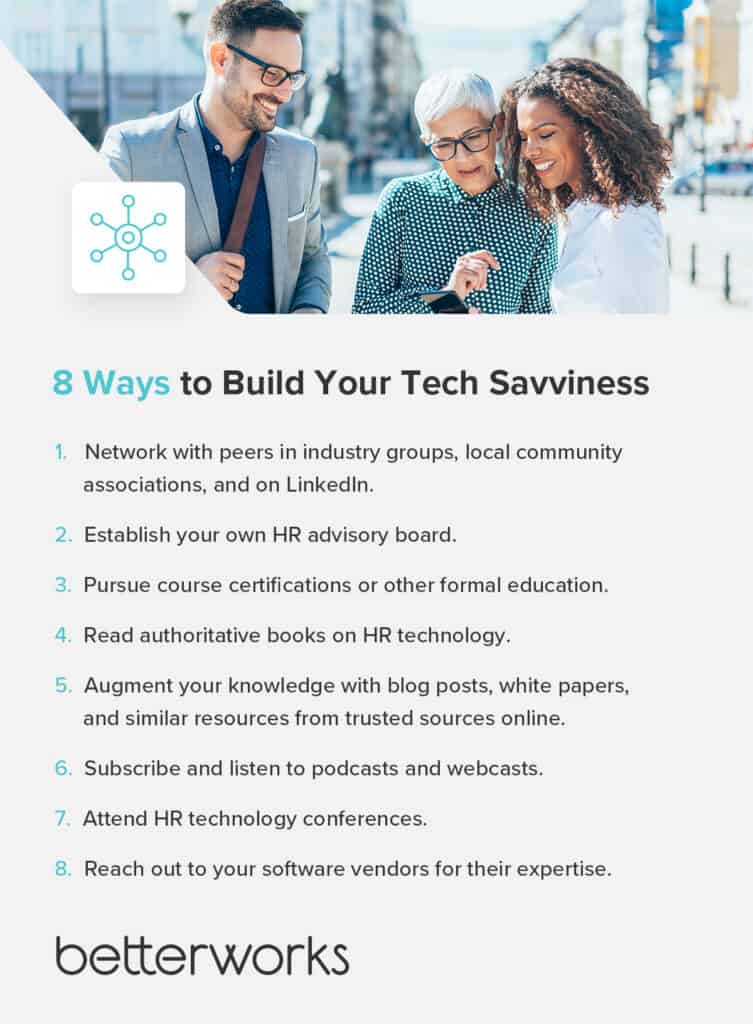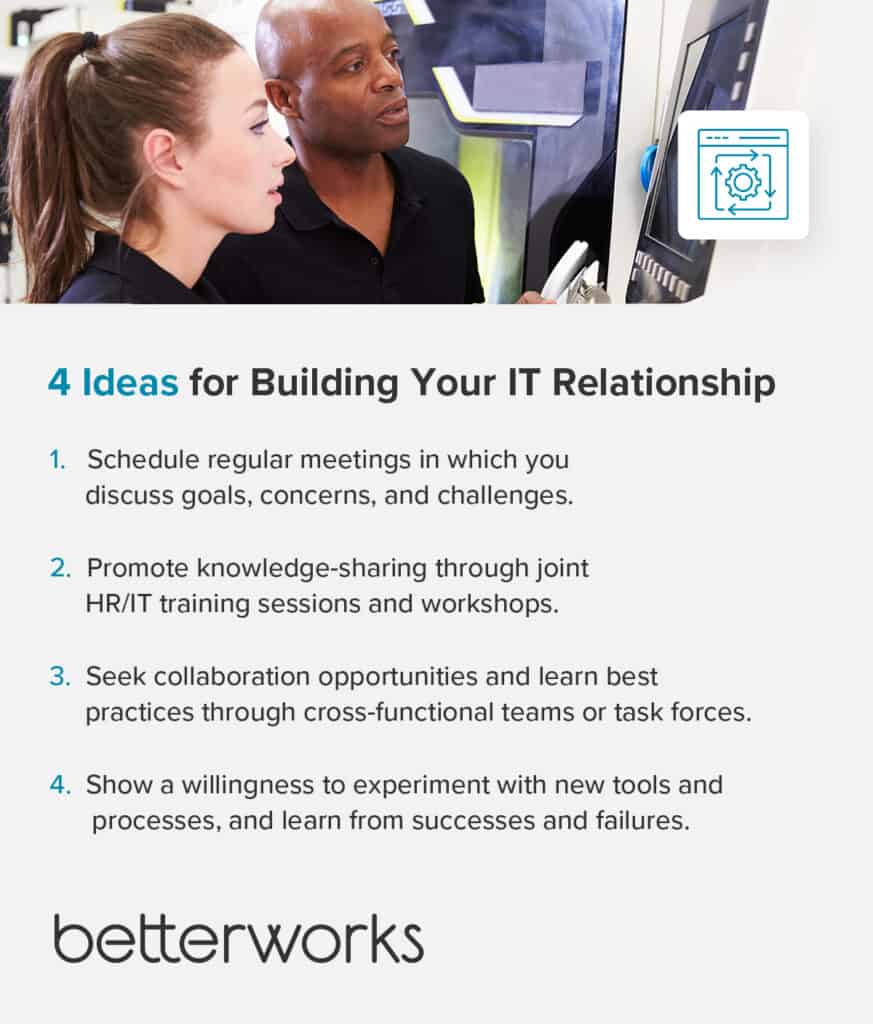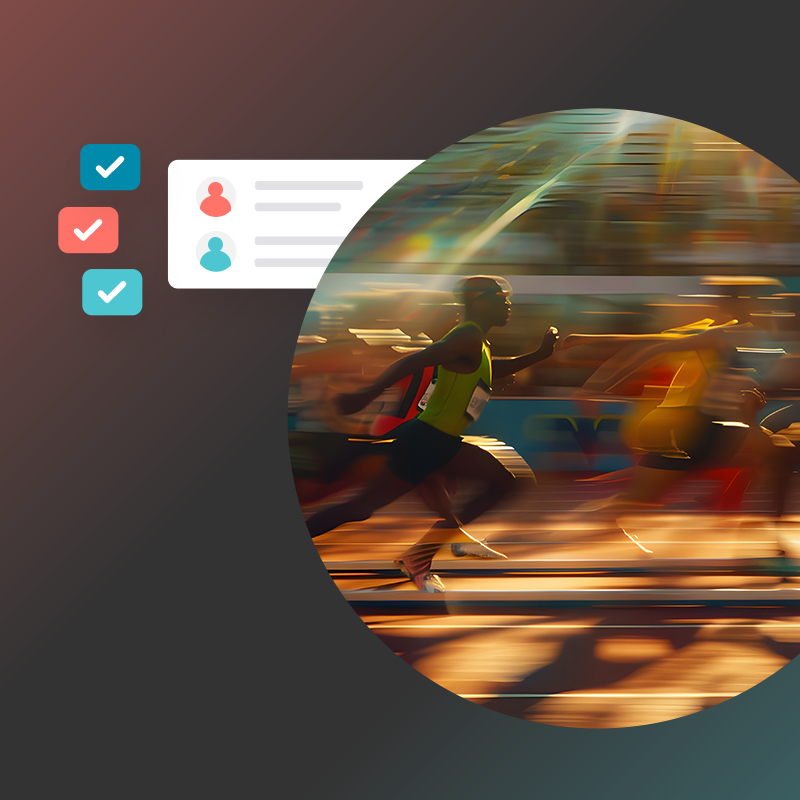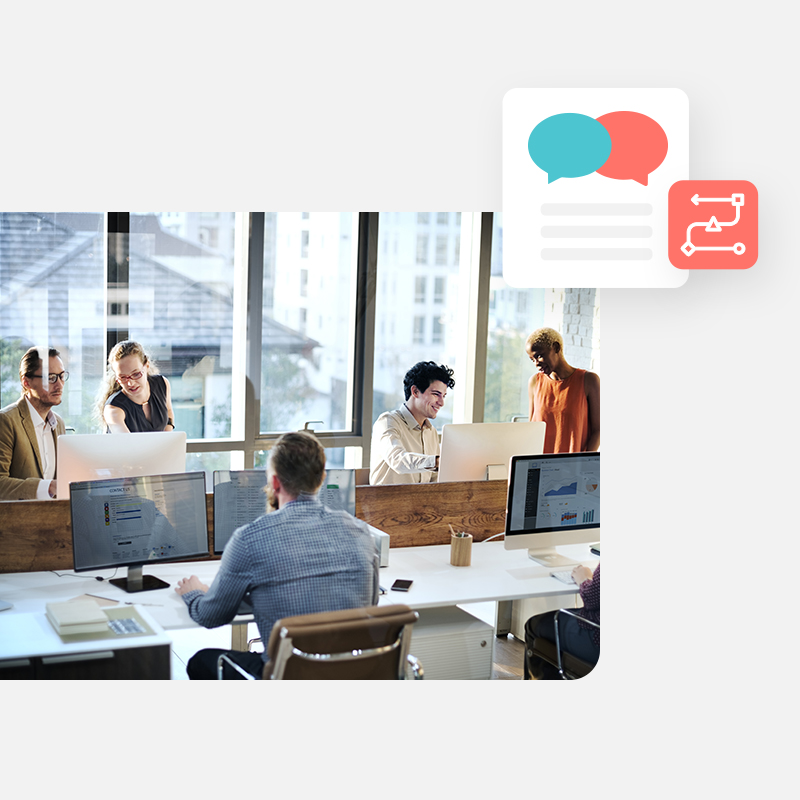Editor’s note: This is the fourth in a series of six articles on how to become a more strategic HR leader.
Digital transformation in HR is revolutionizing how organizations deliver services and support their people, producing more agile, innovative, and successful workforces. Looking back, it’s encouraging to see how far HR leaders have journeyed toward digital transformation — and in a fairly short time.
Think about it: Just 15 years ago, HR’s priority was digitizing manual processes such as payroll, reporting, and recordkeeping. At the time, the primary goal of digital HR transformation was simply to increase efficiency.
The next phase of digital transformation in HR was ushered in by cloud computing. This phase emphasized integration — connecting HR systems and combining data sources to provide comprehensive insights. At this point, HR professionals began connecting different data sets with each other to find correlations and yield more complex and actionable workforce intelligence.
The next phase of HR’s digital evolution — which we’re in now — is about optimizing AI-powered people analytics to generate proactive, predictive insights.
You can see evidence of HR’s evolution of digital transformation in the adoption numbers. Nearly all (93%) of respondents to McLean and Company’s HR Trends Report 2023 are automating routine administrative tasks, even if only 45% have added HR technology-specific roles.
Amid all this change and “the next big thing” in HR tech always lurking around the corner, HR professionals are under more pressure than ever to keep up with digital transformation. Building your knowledge of HR technology is a continuous process that requires consistent effort and adaptation to stay ahead of trends and ensure that your organization’s HR practices remain innovative and efficient. Here’s my take on how to become a tech-savvy leader.
Educate yourself
In my experience, HR professionals tend to be more reserved about networking. But now isn’t the time to be shy. Some of our best lessons come from seeing how others are succeeding (or failing) in applying new technology. Those observations are especially important with everyone looking for new ways to apply generative AI at work.
Industry groups, local community associations, and LinkedIn groups are just a few of the ways to connect with other HR professionals. Make a digital business card to easily share your contact information at these networking events. I’ve also been talking with people lately about creating their own HR advisory boards with like-minded peers. Meet once a month and during each meeting, ask one participant to discuss a challenge they’re grappling with. Then, engage the group’s collective expertise to solve it together.
On your own, pursuing certifications and other formal education helps you learn about emerging concepts while documenting how you’re staying current with HR tech trends.
Authoritative books are another great tried-and-true resource. “Make Work Better,” which I co-wrote with Betterworks CEO Doug Dennerline, provides valuable insights into transforming performance management processes amid a larger digital transformation. “Data-Driven HR” by Bernard Marr is another favorite of mine. Augment books with shorter-form insights from white papers, blog posts, and other content from trusted sources.
Text isn’t the only way to absorb information. Look at interactive activities such as webinars and podcasts. Because many webinars are offered live, they are a fantastic opportunity to engage with thought leaders and ask questions. Find a series you like, such as Betterworks’ People Fundamentals series, and stick with it. Lively and engaging podcasts, including Laurie Ruettimann’s Punk Rock HR, are accessible and offer food for thought on topics such as HR technology changes.
HR tech conferences are another valuable, interactive learning opportunity, albeit more involved and costly. If you’re looking to get this paid for, conference organizers often provide resources to help you make the business case for attending.
Finally, don’t hesitate to reach out to your software vendors. They often have a wealth of resources for organizations related to digital transformation. I often work with companies that want to make the switch to an effective and modern performance enablement process, and am able to draw on my experiences and our in-house experts to assist organizations through the steps of their transformation.

Elevate your relationship with IT
As an HR leader during a time of rapid digital transformation, you need enough technology acumen to understand what drives optimal results, especially from an HR perspective. But there’s a difference between being tech-savvy and being a technologist.
While you need both roles, you don’t need to be both. You can strike a balance between being savvy and being a technologist by focusing on your primary role of managing human capital effectively. Building a strong alliance with IT brings the technologist role to your HR team and enables you to retain your focus on applying technology to enhance HR processes and employee experience and drive meaningful insights and business outcomes.
Let’s compare and contrast your priorities and IT’s. Generally, HR thinks about how technology affects big-picture talent strategy, while IT is responsible for leveraging technology to solve business challenges. IT isn’t just an internal customer of HR, however. IT and HR should be partners and collaborators. CIO and IT roles are transforming as well, and your colleagues in these positions are becoming responsible for helping the organization achieve its strategic business objectives. You’re in the same position as your role evolves, too, so you probably have more in common than you realize.
Be a power couple
There are many ways to foster open and transparent communication channels between HR and IT. Regular meetings in which you discuss goals, concerns, and challenges will enable you to exchange ideas, better understand each other’s needs and expectations, and align strategically. You can strengthen your alliance by offering joint training sessions and workshops between HR and IT to encourage knowledge-sharing. Collaborating via cross-functional teams or task forces that include your IT colleagues can help build trust, improve communication, and remove potential barriers, as well as allow you to share best practices. Be willing to experiment with new tools and processes, and learn from successes and failures.
All these will serve to elevate this relationship and help you build a powerful partnership to move the business forward. The key principles guiding your activities should be to embrace a growth mindset and be willing to adapt. This will enable you to stay ahead of trends and ensure that your organization’s HR practices remain innovative and efficient.
During my first tech transformation project, I spoke multiple times each day with my IT counterpart and we presented everything together. This signaled to everyone else that we were aligned and leading the change together.
Build an alliance with IT before beginning your next HR transformation project. Start by examining how IT supports the business and its operating context. How does your IT organization organize itself to align with the business? Answering these questions will help you map out transformation efforts that align with your business goals.

Experience HR tech the way employees do
What differentiates you as an HR leader when it comes to technology transformation? Your core competencies are communication, empathy, and people-centric design.
One of HR’s priorities during these transformations is the employee and manager experience. Put yourself in their shoes: What concerns do they have about new technology and AI in particular? Which tools are managers and employees using today? How effective are those tools? What causes inefficiency or frustration? Understanding your employees’ points of view will help you develop solutions and gain the buy-in of these stakeholders.
Empathy and human-centric design give HR an edge because you’re telling multilayered stories, not just presenting specs and business basics. You can turn HR’s digital transformation from an infrastructure process into a tale that touches the lives of every employee. Show how digital transformation will improve the employee experience and drive the business results everyone wants.
As VP of HR Transformation at Betterworks, Jamie helps customers reimagine the way employee performance is managed with proven systems and processes that work. She is co-author of the book, Make Work Better, and draws inspiration from her more than twenty-five years of HR leadership experience, spearheading organizational development, HR transformation, and employee engagement strategies that boost business performance.
Build your strategic HR muscle







